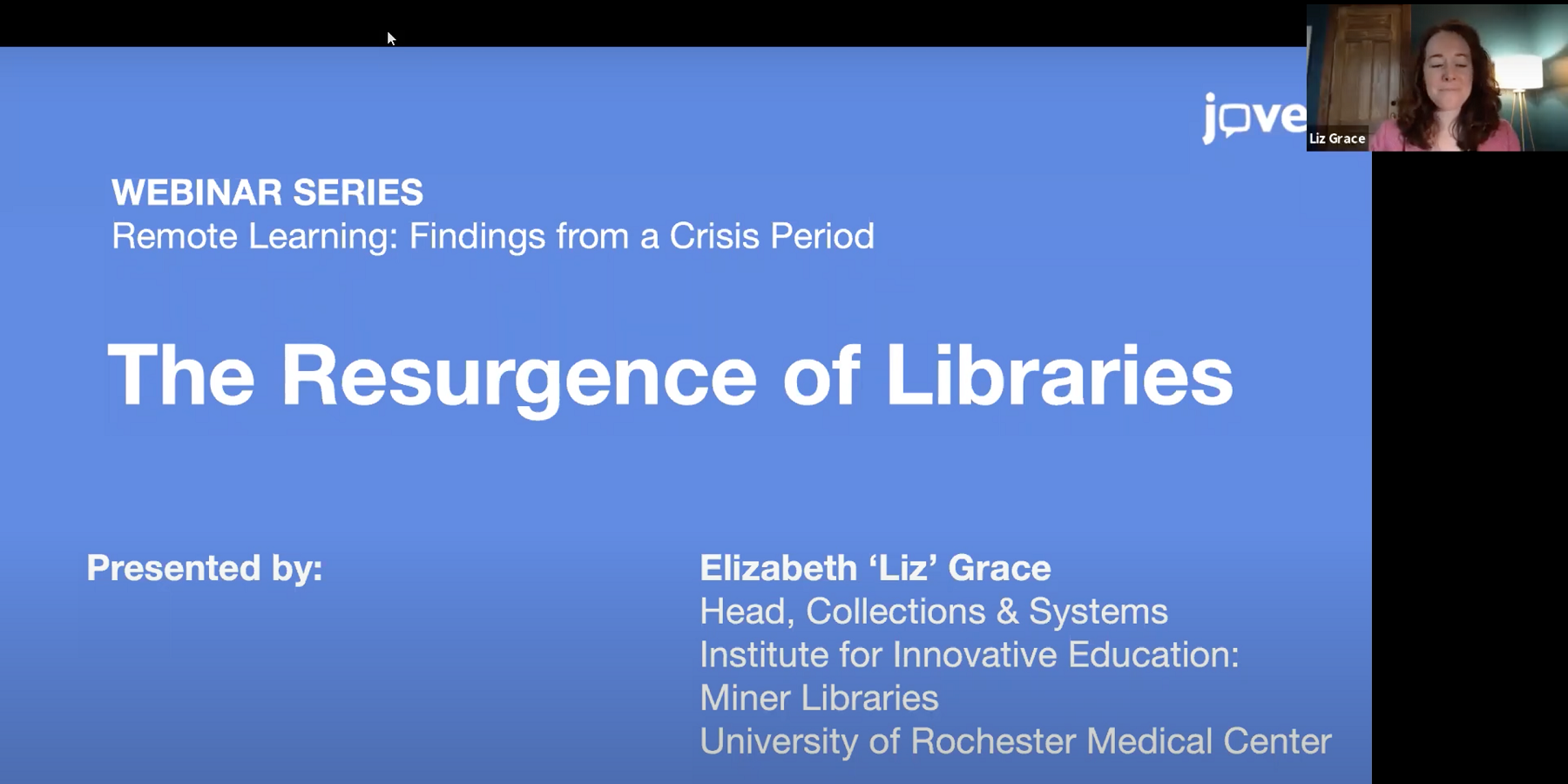Elizabeth ‘Liz’ Grace is the Head of Collections & Systems at the University of Rochester Medical Center’s Edward G. Miner Library. When her institution shifted to remote learning earlier this year, Liz and her colleagues worked tirelessly to ensure that the transition would be as seamless as possible for all its members.
During our remote learning webinar series, Liz spoke about lessons learned during this process. She also discussed ways in which the visibility of libraries has increased due to remote learning. We’ve brought together 5 key takeaways from her webinar.
1. Market library resources through multiple channels
To support the remote learning transition, Liz and her colleagues created a comprehensive guide to digital resources that were temporarily free to access. For them, promoting this resource and relevant library services on social media was crucial — it helped to “remind everybody that library staff were available to help even if physical spaces were closed”, says Liz.
In addition to the library website and social media, the guide was also promoted via the institution’s newsletter. It was sent to the different academic deans, department liaisons and department heads, who then forwarded it to faculty and instructors. When Liz sent these resources to individuals via email, she also asked them to share these with their friends and colleagues to maximize their reach.
2. Embrace unique opportunities afforded by remote learning
Liz notes that “the online curriculum proved to be one of the biggest opportunities for the library.” In particular, it allowed patrons to learn more about the resources and services available. Liz, for instance, received requests for access to JoVE video resources, from faculty members teaching online labs — who then learned from her that their library was already subscribed. “Moments like that highlighted that ‘oh, the library has these resources that I didn’t even know they had,’” says Liz.
The shift to remote learning also showed Liz new ways to improve certain library services. For instance, conducting refreshers on how to use RefWorks proved to be more convenient via videoconferencing than in person, partly due to screen sharing features. “Things I just assume had to be done face to face...some of them I actually prefer doing over Zoom,” she says.
3. Keep lines of communication open with your colleagues, patrons and institution
Liz and her team held frequent meetings online, and Liz notes that meeting in smaller groups every day was invaluable. If anyone received a question that they didn’t anticipate, the team was there to help — “you have a group of 8-9 people that you can rely on, and you meet every morning at 9 a.m.,” said Liz. They also recorded these meetings and kept notes to ensure that no one missed out.
Communication services that the library had in place before the pandemic also proved helpful for patrons. If members had any questions, access issues, or needed reference assistance, they could use a synchronous chat service or fill out an online form.
Finally, Liz notes, forming close relationships with faculty and liaison departments was key to anticipating user needs. It also helped to better understand what kinds of resources they were already using, which could help avoid the possibility of duplicated resources.
4. Prepare in advance for different contingencies
“Being aware of potential emergencies and having back up plans for all sorts of things is never a bad idea,” says Liz. The team at the Miner Library had created several library guides, prior to the pandemic, on a wide variety of topics — from public health and publishing to copyright compliance. These proved to be a helpful reference point for patrons accessing library resources from afar.
For Liz, the unexpected transition in modes of learning also demonstrated the importance of building both physical and digital collections. “We need to have diverse ways of accessing information,” she says.
5. Don’t forget to have fun!
To lift spirits, Liz and her team created cartoon versions of themselves, which they posted on social media. These received a very positive response from members of their institution, who tried to match the librarians to their avatars. “Infusing a little bit of humor, a little bit of fun, helped lift the cloudy mood a little bit,” notes Liz.

